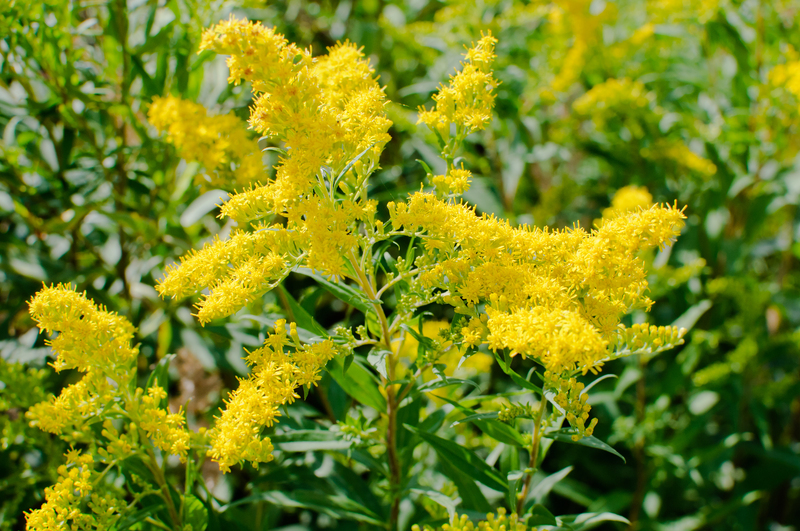Proactive Steps Homeowners Can Take to Prevent Lawn Drought Stress This Summer
Maintaining a lush, green lawn throughout the sweltering summer months can be a challenge, especially as drought conditions become more common across many regions. Lawn drought stress not only diminishes the beauty of your landscape, but it can also lead to long-term damage, increased pests, and weakened grass that struggles to recover. Fortunately, there are proactive steps every homeowner can take to protect their yard and promote a healthy, resilient turf--even under the harshest summer conditions.
Understanding Lawn Drought Stress
Before you can effectively prevent lawn drought stress, it's essential to understand what it is and how it affects your grass. Drought stress occurs when turf grasses become deprived of adequate water for their needs, causing wilting, discoloration, thinning, and eventually, dormancy or death if left unmanaged. Signs of stressed lawns include a bluish-gray hue, visible footprints, or blade folding.
By taking proactive measures, you can not only mitigate these risks but also create a more sustainable landscape that uses water efficiently and thrives even with restricted irrigation.

1. Select Drought-Resistant Grass Varieties
One of the most effective strategies to avoid summer drought stress on your lawn is to start with the right grass species. Some grasses have a natural tolerance to extended dry periods, either by going dormant and recovering quickly or by maintaining their vigor with less water.
Top Drought-Resistant Grasses
- Bermuda Grass: Ideal for hot climates, this warm-season grass is exceptionally hardy in drought conditions.
- Zoysia Grass: Tolerates heat and drought, and rebounds quickly after dry spells.
- Tall Fescue: A cool-season grass that features deep root systems for improved drought resistance.
- Buffalograss: Native to North America and requires minimal supplemental water.
If you're establishing a new lawn or overseeding, consult with your local nursery about the best drought-tolerant option for your region's climate.
2. Improve Soil Health for Better Water Retention
Soil quality dramatically influences your lawn's ability to resist heat and drought. Healthy, well-aerated soil with a high organic matter content absorbs and retains water efficiently, delivering it to grassroots when needed.
Enriching Your Soil
- Test your soil: Use a soil test kit to measure pH and nutrient levels. Amend as needed; most lawns thrive at a pH between 6.0 and 7.0.
- Topdress with organic compost: Applying a quarter-inch layer in spring and fall adds water-holding capacity and nutrients.
- Aerate annually: Core aeration loosens compacted soil, allowing water to penetrate more deeply.
A combination of these steps ensures a strong foundation, fostering a robust root system that can weather dry conditions.
3. Mow Smarter, Not Shorter
Mowing is more than just a cosmetic practice; it's a primary defense against lawn drought stress in summer. The way you mow impacts how well your grass retains moisture and copes with heat.
- Set your mower high: Leave grass blades at least 3 inches long. Taller grass shades soil, retaining moisture and encouraging deeper roots.
- Keep blades sharp: Dull blades tear grass, causing more stress and making it vulnerable to drought and disease.
- Follow the one-third rule: Never remove more than a third of the grass blade's height at one time.
Regular smart mowing promotes strong, drought-resistant turf capable of withstanding summer extremes.
4. Water Wisely: Timing, Depth, and Frequency
Watering practices are crucial in the battle to prevent lawn drought. Too little water leads to stress, while too much can promote disease and shallow roots.
- Water early in the morning: This minimizes evaporation and allows grass to dry before nighttime, reducing fungal growth.
- Deep, infrequent watering: Aim for about 1 inch of water per week, applied in one or two sessions. This encourages deep root growth.
- Adjust for rainfall: Skip irrigation if your lawn receives adequate rain.
- Use smart irrigation systems: Install weather-based or soil-moisture sensors for efficient, automated watering.
Pro tip: Place a tuna can on your lawn while watering. When it fills to an inch, you've watered enough.
5. Apply Mulch and Grass Clippings
Applying a layer of mulch around trees, shrubs, and even using grass clippings on your lawn helps insulate the soil. This technique reduces evaporation and conserves soil moisture--both key to preventing lawn drought stress during hot weather.
- Leave short clippings on the lawn: They decompose quickly, returning nutrients and forming a light mulch.
- Apply mulch to garden beds: Use organic mulch (wood chips, bark, straw) to shield soil and roots from intense sun.
This simple, eco-friendly approach improves water retention and overall lawn health.
6. Fertilize Carefully and Avoid Over-Fertilizing
Fertilizing during drought can backfire. Over-fertilization promotes excessive leaf growth, increasing a plant's demand for water and exacerbating stress.
- Fertilize in early spring or late fall: Avoid fertilizing during peak summer heat to reduce water demand.
- Use slow-release fertilizers: They feed grass gradually, supporting healthy roots without growth spurts.
- Choose organic or natural fertilizers: They are less likely to burn the lawn or leach away with minimal rainfall.
Responsible fertilizer use supports a strong, drought-tolerant lawn.
7. Control Weeds and Lawn Thatch
Weeds and thatch compete with your grass for valuable moisture and nutrients. Effective lawn maintenance means keeping both under control:
- Remove weeds regularly: Hand-pull or spot-spray with selective herbicides before they establish dominance.
- Dethatch if necessary: A half-inch or more of thatch can prevent water from reaching soil. Use a dethatching rake or hire a professional service.
A clean, well-managed lawn requires less water and is less susceptible to drought stress during the hottest days.
8. Practice Smart Lawn Maintenance Techniques
Apart from watering, mowing, and fertilizing, regular smart maintenance is fundamental to keeping your lawn resilient against drought:
- Overseed thin areas: Fill in bare spots in spring or early fall with drought-tolerant grass species.
- Avoid heavy traffic: Foot traffic compacts soil, limiting root growth and water absorption.
- Repair and maintain irrigation systems regularly: Fix leaks and adjust coverage patterns for even watering.
Consistent care builds a thick, deep-rooted lawn that can better withstand periods of dryness.
9. Consider Natural Lawn Alternatives
If you live in an area with frequent water restrictions or chronic droughts, consider reducing traditional high-water turfgrass in favor of more drought-resilient alternatives:
- Groundcovers: Such as creeping thyme or clover, which require less water.
- Native plants: Adapted to your local environment and inherently drought-resistant.
- Xeriscaping: Designing lawns with minimal water requirements, including mulch beds and decorative hardscapes.
These approaches provide beauty, reduce maintenance, and are eco-friendly choices for the modern homeowner.
10. Monitor and Respond Promptly to Signs of Stress
Even with all these proactive drought prevention steps for your lawn, conditions can change rapidly. Monitor your grass for early signs of stress:
- Look for color changes: Lawns turning blue-gray or showing slower growth may need extra support.
- Check soil moisture: Push a screwdriver into the soil; if it's hard to penetrate, it's too dry.
- Respond quickly: Adjust your watering or care routines at the first sign of trouble to prevent long-term damage.

Frequently Asked Questions About Preventing Lawn Drought Stress
How can I tell if my lawn is going dormant or dying?
Dormant grass generally turns brown but will recover when rain or irrigation returns. Dead grass pulls up easily and won't regrow in healthy green patches. Monitoring over a few weeks can help you distinguish between the two.
Is it okay to let my lawn go dormant during summer drought?
Yes. Many grasses, especially cool-season types, can safely go dormant to conserve resources. Provide occasional deep watering (once a month) to prevent crown death, and avoid fertilizing or heavy traffic during dormancy.
Can I water my lawn at night?
While watering at night reduces evaporation, it also increases the risk of fungal disease because moisture stays on grass blades longer. Stick to early morning watering for best results.
Are organic lawn treatments more effective against drought stress?
Organic treatments, including compost and mulches, help build healthier soil and root systems that are naturally more drought-resistant. They're often a key component of sustainable lawn care.
Conclusion: Invest in a Resilient, Healthy Lawn This Summer
Summer drought doesn't have to mean defeat for your dream of a beautiful green yard. Proactively preventing lawn drought stress is about more than just watering--it's an integrated approach that includes selecting the right grass type, improving soil, mowing and watering wisely, mulching, fertilizing correctly, controlling weeds, maintaining your lawn properly, and considering sustainable landscaping alternatives.
By implementing these smart, proactive strategies, you can create a lawn that is not just resistant to drought but also environmentally friendly, efficient, and the envy of your neighborhood. Start preparing now to enjoy a lush, vibrant landscape--no matter what summer brings!